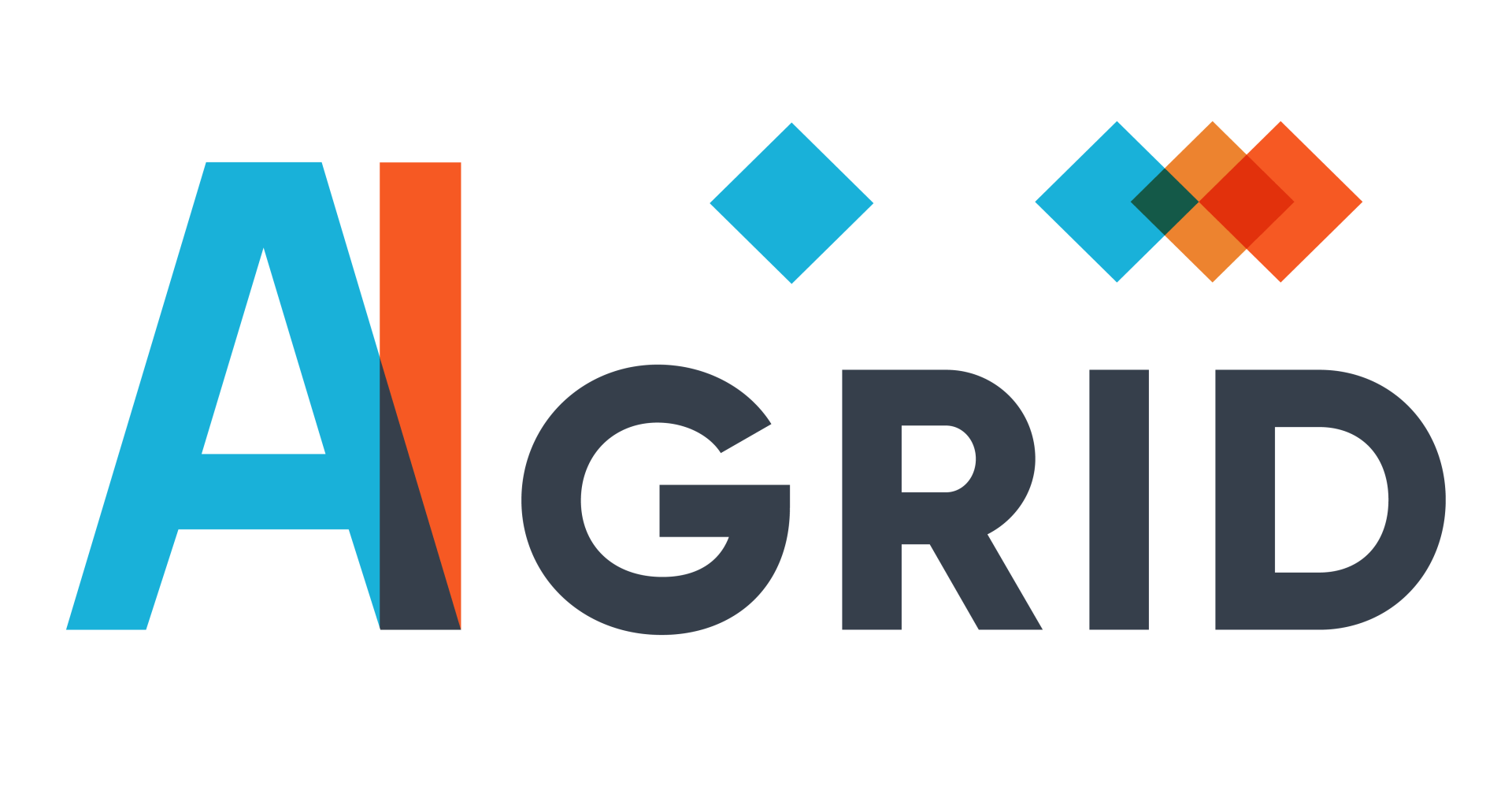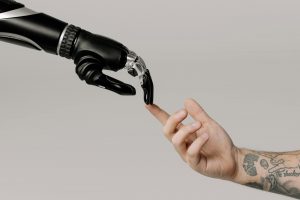Micro Focus Groups
AI Grid is a network of small, specialized AI communities – Micro Focus Groups (MFGs) – that are clustered into domains with a methodological and application focus.
AI Grid is growing to over 50 communities and fosters interdisciplinary research.
DOMAINS
Here you will find our current micro focus groups
This group focuses on real-world applications of machine learning, exploring how models can be designed, deployed, and evaluated to solve practical challenges in health, finance, mobility, sustainability, and beyond.

ML: Applications
This group explores real-world applications of computer vision, focusing on how AI can extract and use visual information to solve practical problems in healthcare, mobility, industry, and environmental monitoring.

CV: Applications
Diese Gruppe beschäftigt sich mit dem praktischen Einsatz von Robotik in realen Umgebungen, wobei KI mit robotischen Systemen kombiniert wird, um anspruchsvolle Aufgaben in Industrie, Dienstleistung und Alltag zu lösen. Im Mittelpunkt stehen sowohl die Umsetzung robotischer Technologien als auch die Bewertung ihrer gesellschaftlichen und operativen Auswirkungen.

ROB: Applications
This category explores models and systems that emulate human-like cognition by integrating perception, reasoning, learning, memory, and decision-making. Research includes symbolic, connectionist, hybrid, and embodied approaches to building autonomous agents that adapt over time and act in goal-directed, context-aware ways. The aim is to design cognitive architectures that reflect core aspects of human or animal intelligence.

CMS: Agent & Cognitive Architectures
This category focuses on machine learning methods with built-in privacy protections to safeguard sensitive data during training, inference, and deployment. It includes approaches such as differential privacy, secure multi-party computation, homomorphic encryption, and privacy-preserving federated learning. Research addresses the trade-off between model performance and data confidentiality.

ML: Privacy-Aware ML
ese Kategorie befasst sich mit maschinellem Lernen in dezentralen oder verteilten Umgebungen, in denen Daten und Rechenressourcen über mehrere Geräte oder Organisationen verteilt sind. Im Fokus stehen Verfahren für gemeinsames Modelltraining ohne zentrale Datenteilung sowie Herausforderungen wie Kommunikationseffizienz, Datenschutz, Heterogenität und Systemrobustheit.

ML: Distributed Machine Learning & Federated Learning
This category focuses on computational models of brain function and structure, using simulation, mathematical modeling, and machine learning to study neural mechanisms. Topics include neural coding, cognitive architectures, brain-inspired computing, and large-scale brain network simulations. The research bridges neuroscience, AI, and cognitive science, spanning both biologically detailed and abstract models.

CMS: Brain Modeling
Human-in-the-loop Machine Learning

HAI: Human-in-the-loop Machine Learning
Diese Kategorie befasst sich mit der Interpretierbarkeit und Transparenz von NLP-Modellen. Sie umfasst Methoden zur Analyse der Sprachverarbeitung, Erklärung von Modellentscheidungen, Aufdeckung von Verzerrungen und Verhaltensanalysen über verschiedene Aufgaben und Sprachen hinweg. Ziel ist es, NLP-Systeme verständlicher, vertrauenswürdiger und besser überprüfbar zu machen.

SNLP: Interpretability & Analysis of NLP Models
This category explores how AI systems can integrate moral reasoning, ethical principles, and human values. Research includes modeling and learning moral norms, addressing ethical dilemmas, and enabling value-sensitive decision-making. Approaches range from computational frameworks to interdisciplinary methods involving philosophy, law, and the social sciences. Example topics include fairness-aware reinforcement learning, logic-based modeling of moral dilemmas, and culturally sensitive value alignment for AI assistants.

PEAI: Morality & Value-based AI
This category focuses on algorithms that enable AI systems to anticipate, interpret, and adapt to human behavior in dynamic settings. It includes methods for predicting intentions, goals, and actions, and for planning with human preferences, beliefs, and uncertainty in mind. Applications span human-robot interaction, collaborative systems, autonomous vehicles, and assistive technologies. Examples include pedestrian trajectory prediction, adaptive robot motion planning, and driver intent modeling in mixed-autonomy traffic.

HAI: Human-Aware Planning and Behavior Prediction
This category covers computational models and algorithms for interpreting brain activity and cognitive states using brain-sensing technologies such as EEG, fMRI, MEG, and NIRS. Applications include brain-computer interfaces, neuroadaptive systems, and cognitive state modeling. Contributions span signal processing, machine learning, human-AI interaction, and hybrid neuro-symbolic methods. Examples include mental workload classification from EEG, decision prediction from fMRI, and real-time BCI systems using graph neural networks.

HAI: Brain-Sensing and Analysis
This category covers supervised learning methods for predicting classes or continuous values from labeled data. Techniques include neural networks, decision trees, support vector machines, and ensemble models, with a focus on building models that generalize well. Applications range from cancer subtype prediction and drug response estimation to cell type classification in single-cell RNA-seq data.

ML: Classification & Regression
This category focuses on unsupervised learning methods for uncovering structure in unlabeled datasets by grouping similar data points. Techniques such as k-means, hierarchical clustering, density-based models, and deep clustering frameworks are used to explore data, generate hypotheses, and enable tasks like patient stratification. Example applications include identifying novel disease subtypes from multi-omics data with spectral clustering, discovering gene modules with shared expression across tissues, and grouping patients based on metabolomics profiles using deep embedded clustering.

ML: Clustering
This group explores how knowledge can be formally represented and logically processed in AI systems. It focuses on symbolic approaches that enable machines to reason over structured data and draw meaningful conclusions. Core research areas include formal languages such as Description Logics, OWL, and First-Order Logic; automated reasoning and inference; ontology design for domains like healthcare and manufacturing; hybrid neuro-symbolic methods; and applications in explainable AI and decision support.






